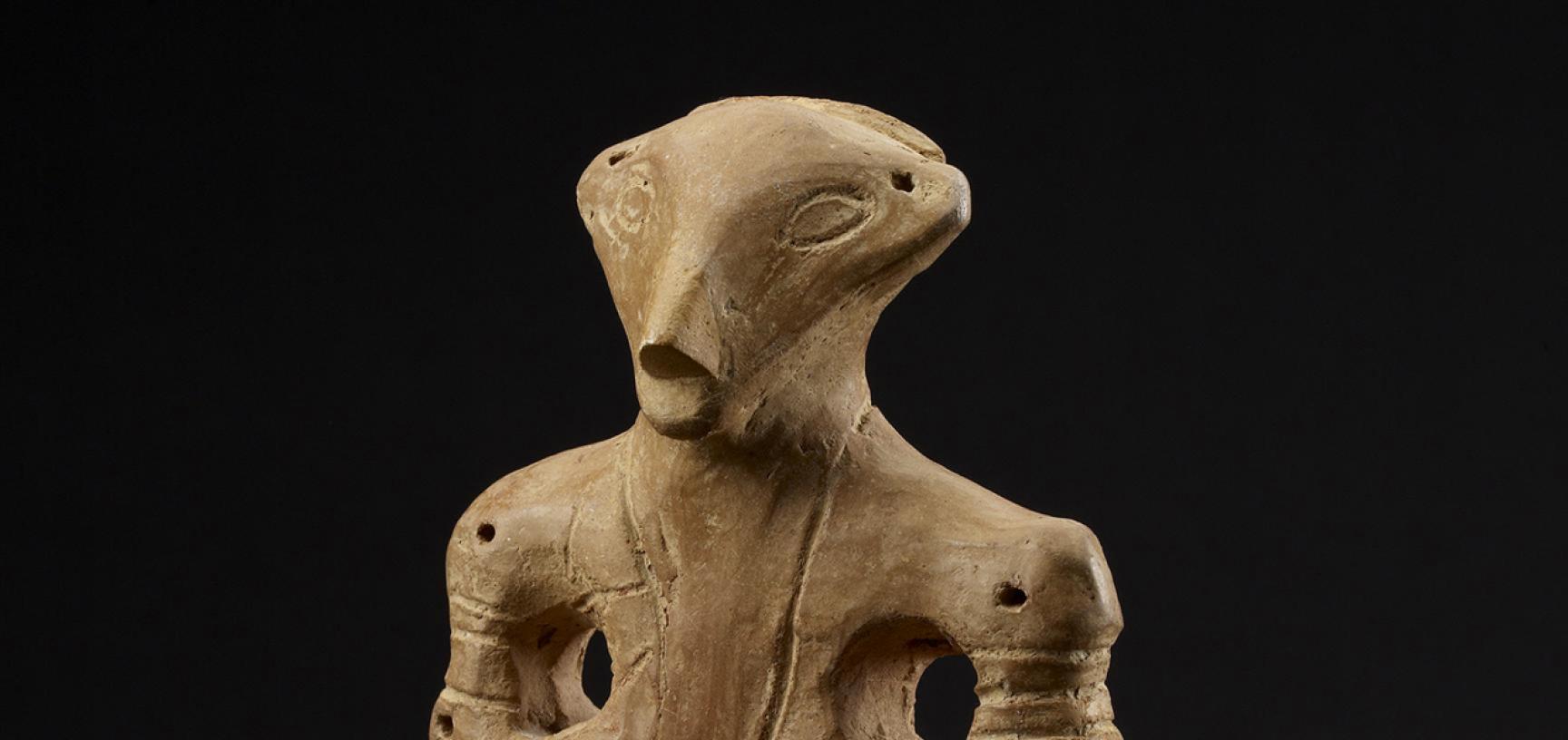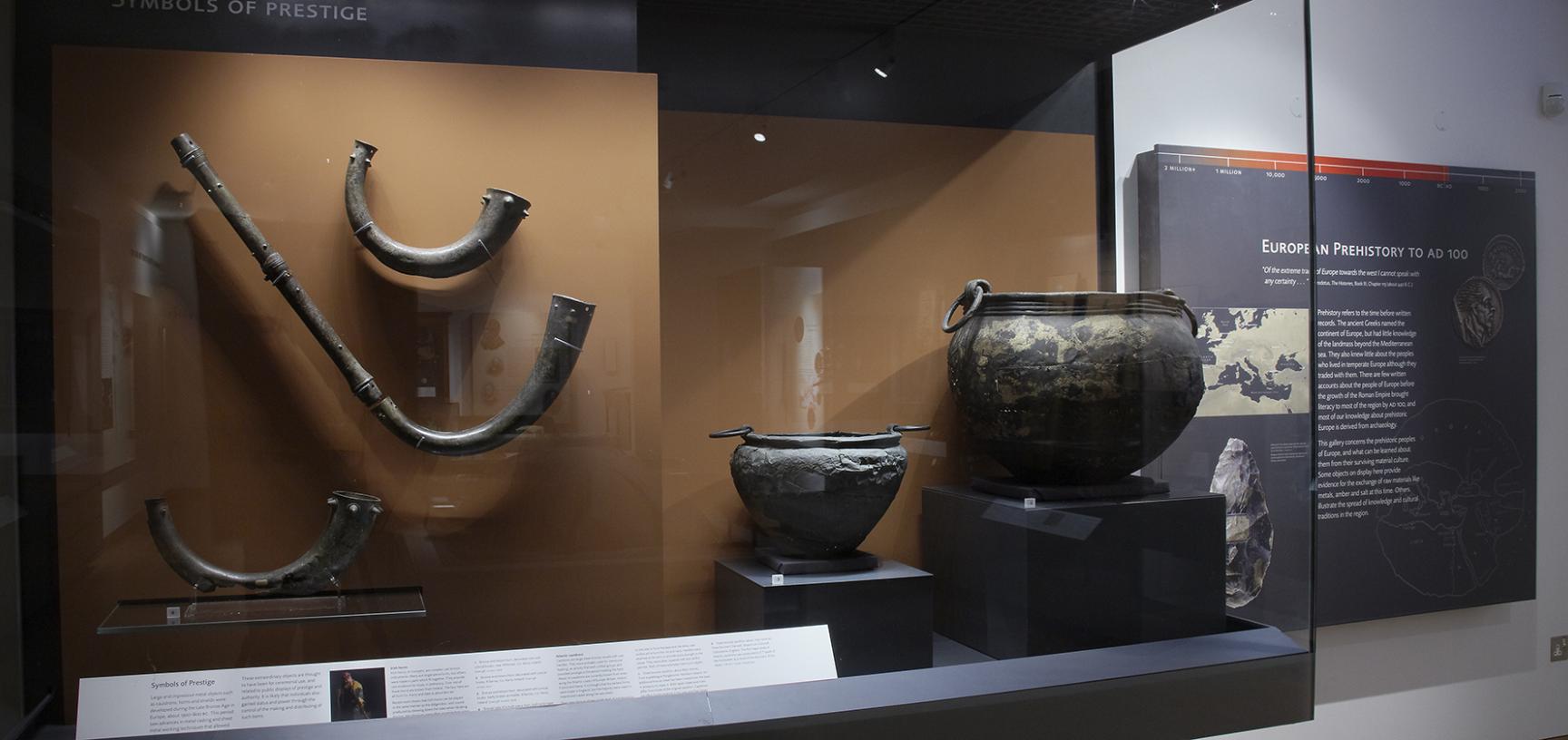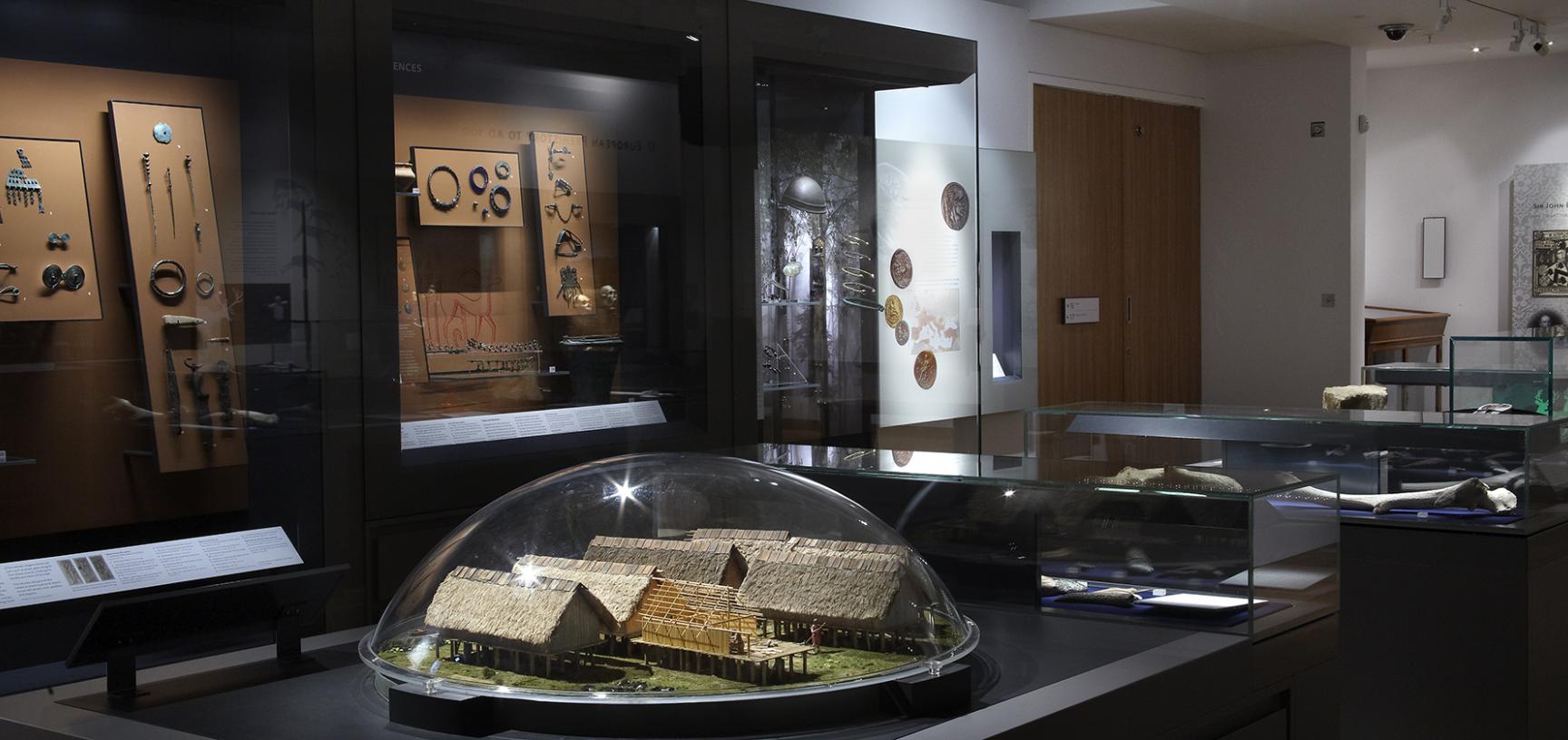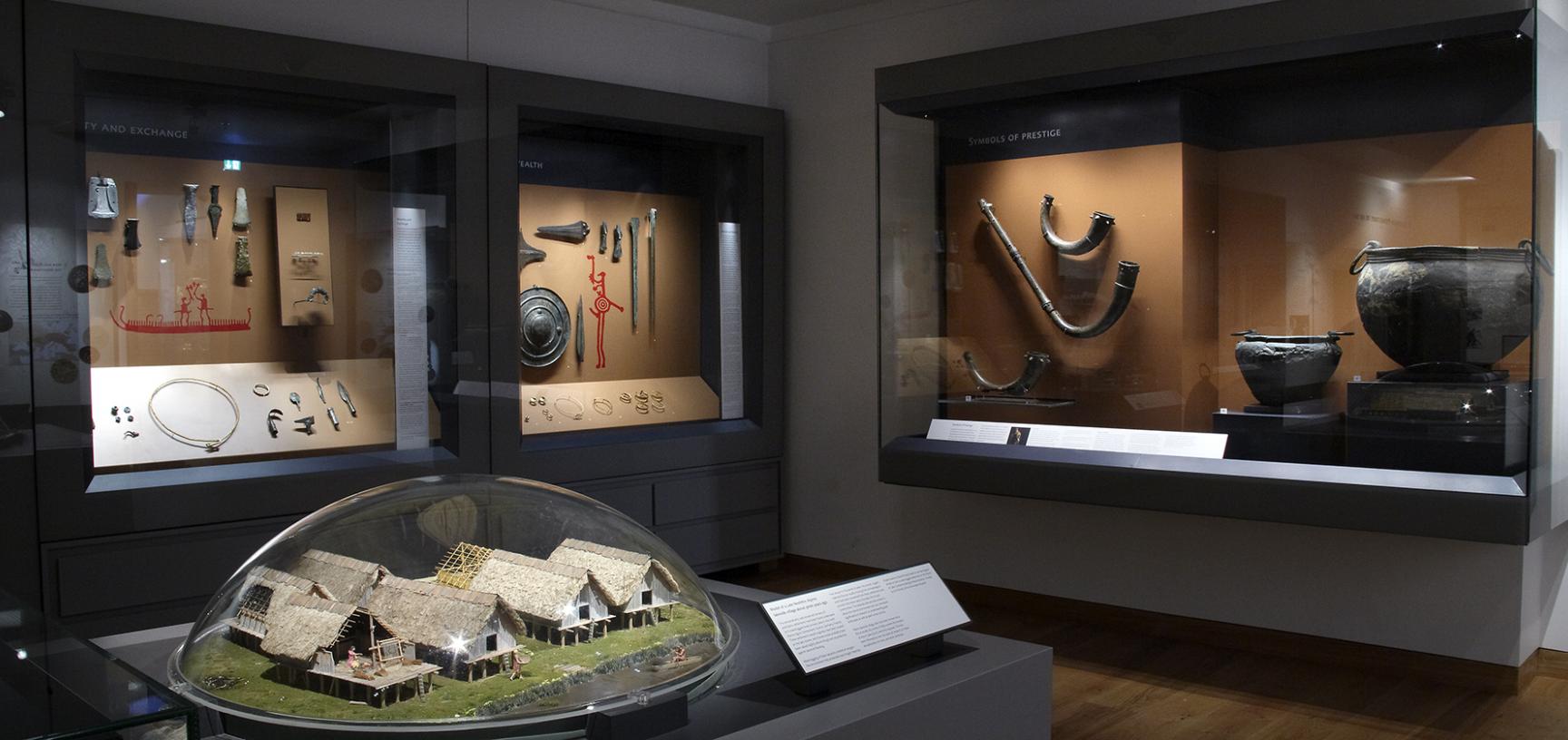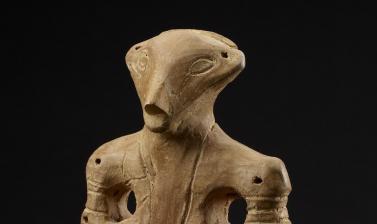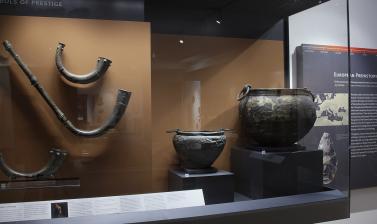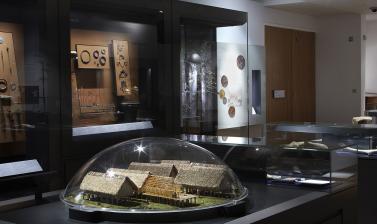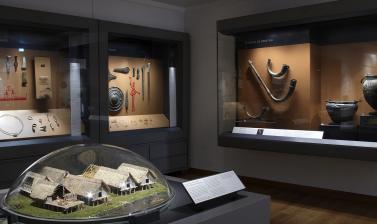EUROPEAN PREHISTORY
Prehistory refers to the time before written records. There are few written accounts about the people of Europe before the growth of the Roman Empire brought literacy to most of the region by AD 100, and although the ancient Greeks had traded with peoples in temperate Europe they knew little about them. As a result most of our knowledge about prehistoric Europe (up to AD 100) is derived from archaeology. Some objects on display here provide evidence for the exchange of raw materials like metals, amber and salt at this time. Others illustrate the spread of knowledge and cultural traditions in the region.
A display of highly polished jadeite axe heads with a geological source in the Western Alps shows how these items were found as far north as Scotland and and as far south as Sicily, illustrating that people moved long distances during the Neolithic Period. The technical advances in ceramics and metalwork are also illustrated. Cauldrons and horns on the end wall show that feasting and music was important to prehistoric societies and there are some fine examples of jewellery and metalwork on display in other cases. A display of coinage shows how Celtic mercenaries to Mediterranean armies took their pay home leading to the establishment of a system of currency.
One of the central displays focuses on how physical principles such as leverage and tension were applied in prehistoric societies. The use of bows and spears in hunting is investigated and an interactive activity gives you a chance to see how good your judgement is for projecting an arrow. Nearby you can try your hand at raising a large block of stone and discover the ideal point of leverage. Examples of other prehistoric tools and weapons are displayed such as deer antlers which were adapted to be used as picks.
By the end of this period most of Europe had become part of the Roman Empire. As you leave the gallery there is a display of Roman coins with depictions of how the Romans viewed the people they had conquered.



